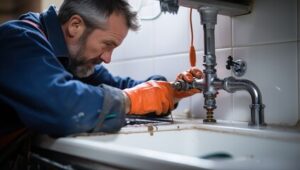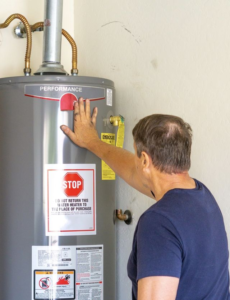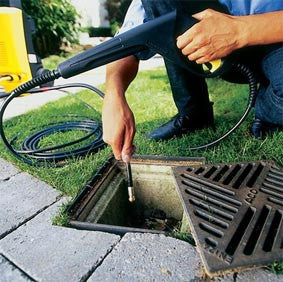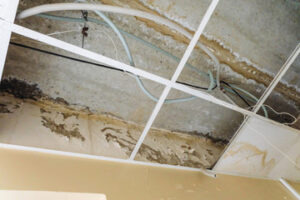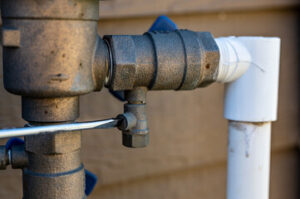Every modern house and commercial building needs a plumbing system that provides potable water, drains waste products, and regulates indoor climate. Plumbers install, maintain, and repair these systems.

These professionals may work for construction companies or plumbing contractors or be self-employed. They must have technical knowledge, physical stamina, and good problem-solving skills. To learn more, visit https://www.plumberscranton.com/.
Plumbers are responsible for the installation, repair, and maintenance of plumbing systems. These systems facilitate the distribution of water and the removal of waste in residential, commercial, and industrial settings. They also enable the safe and efficient use of appliances like sinks, toilets, showers, and water heaters. To become a plumber, an individual must complete a four- to five-year apprenticeship program that combines on-the-job training with classroom instruction.
Once qualified, plumbers can install new plumbing systems according to blueprints and plans. This includes laying out pipe networks, connecting fixtures and appliances, and ensuring that all components comply with building codes and regulations. They may also be responsible for inspecting and testing plumbing components to ensure proper functionality.
Plumbers who specialize in residential work usually focus on installing and repairing plumbing fixtures, such as faucets, toilets, showers, and tubs. They may also be responsible for locating and fixing leaks, removing and replacing drain covers, and making sure that all water supply lines and drains are connected to the correct pipes.
Commercial and industrial plumbers typically work on larger-scale projects. This can include working on piping systems that serve offices, stores, restaurants, hospitals, and other buildings with multiple occupants. These projects may involve laying out and connecting complex piping systems, including fire sprinkler systems and large-scale water heaters. These plumbers are often required to collaborate with construction teams and architects to ensure that all aspects of the building’s infrastructure are coordinated correctly.
In addition to these project-based tasks, plumbers are frequently called on to perform maintenance and emergency repairs. These jobs can include unclogging drains, inspecting and cleaning fixtures, repairing toilets and clogged sinks, restoring water systems after flooding or fires, and installing gas line appliances like stoves and dryers. Plumbers who are on-call for emergencies typically have to be available after hours and on weekends.
To be a successful plumber, it’s important to have strong critical thinking skills and excellent verbal communication abilities. You’ll need to be able to listen to customer complaints and understand their issues, then determine the best course of action to resolve them. You’ll also need to be able to explain technical information clearly and concisely to customers, so they understand what needs to be done and the associated costs.
Education and Training Requirements
A high school diploma is typically the minimum educational requirement to become a plumber. Those who want to advance their career can pursue vocational training at a trade or community college. Programs can cover topics like local plumbing codes, pipefitting techniques, and blueprint reading. Apprenticeship programs are also available, and they can provide on-the-job training with a journeyman or master plumber.
Plumbers must have strong physical stamina and dexterity to work in tight spaces. They need to be able to lift and maneuver heavy objects. They must also be able to stand for long periods of time and work in extreme temperatures. They must be comfortable wearing protective gear such as safety goggles and face masks. Plumbers need good customer service skills to communicate effectively with clients and answer their questions.
Most states require plumbers to be licensed. Licensing requirements vary by state, but they usually include completing an apprenticeship program, meeting experience and education requirements, and passing a certification exam. Plumbers can also choose to pursue professional certifications in specific areas of the field, such as working with particular types of equipment.
Plumbing systems are often complicated, so plumbers must be able to follow blueprints and architectural plans to install new pipes and fixtures. They must also be able to troubleshoot problems and find effective solutions quickly. Plumbers may also need to collaborate with other construction and tradespeople on large projects.
Commercial plumbers work on larger-scale projects, such as office buildings, schools, hospitals, shopping centers, and power plants. They must be able to work with complex plumbing systems that serve multiple occupants and meet the building code requirements for each space.
Industrial plumbers focus on installing and repairing plumbing systems for factories and other industrial settings. They may need to work with specialized machinery and complex plumbing systems that support industrial processes. Plumbers who specialize in industrial work can sometimes earn higher salaries than those who only perform residential services. They can also receive additional benefits, such as health insurance, paid vacation, and sick days. Plumbers can also choose to join a union, which can improve their job security and earning potential.
Licensing Requirements
A plumber must have a license to work in most states and municipalities. The licensing requirements vary, with some places requiring a specific number of years of on-the-job training and passing an exam to become licensed. Other factors, such as education and experience, can also influence a plumber’s eligibility to take the exam. In addition to a plumbing license, plumbers often must have a state-issued business license, workers’ compensation insurance and liability insurance.
In order to obtain a plumbing license in New York, a candidate must complete an apprenticeship program, pass an exam and have at least seven years of experience working as an apprentice and journeyman under the supervision of a licensed master plumber. In some cases, a person may count the number of years spent working in planning and design of plumbing systems as part of this requirement, but only if the work was performed within the last ten years.
The licensing process for plumbers is administered by the City Department of Buildings. The application includes an affidavit from a master plumber attesting to the applicant’s experience. The affidavit must be signed and notarized, and the applicant must submit it with other documents, including character references, passport photographs and a fee.
Plumbers must have certain soft skills to succeed in the profession, including the ability to listen attentively to customer complaints and troubleshoot issues. Plumbers also must have good communication skills, because they must be able to explain complex plumbing problems to customers in a way that makes sense to them. Finally, plumbers must be able to take direction from supervisors and other members of the construction team.
Plumbing licenses must be renewed periodically, and the cost of renewal varies depending on the location. Typically, renewing fees are less expensive than initial licensing fees. In addition, plumbers must pay for continuing education courses to stay current with industry trends and regulations.
During the course of a day, plumbers are at risk of exposure to diseases and infections. Plumbers who repair sewage systems are at particular risk of infection because they are exposed to human waste, which can contain infectious diseases such as cholera, typhoid and hepatitis. To protect themselves, plumbers must wear protective clothing and cover their faces when working in sewer lines.
Work Environment
Plumbers often work in a variety of environments, including residential homes, commercial buildings, and industrial facilities. They may need to work in tight spaces and work outside in inclement weather. Plumbers also collaborate with other construction tradespeople on building projects, laying out plumbing systems according to blueprints and specifications. These settings provide a unique workplace challenge, as plumbers install and repair large-scale water supply and drainage systems that serve many occupants simultaneously. Take our career test to see if a career as a plumber is right for you.
Plumbers tend to be realistic individuals who are independent, stable, and persistent. They enjoy tasks that are hands-on, physical, athletic, and mechanical.
